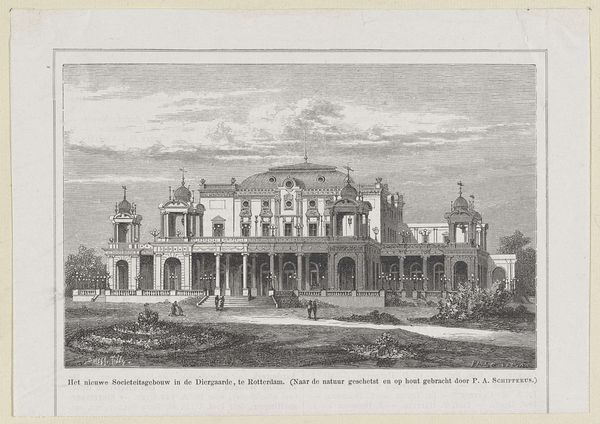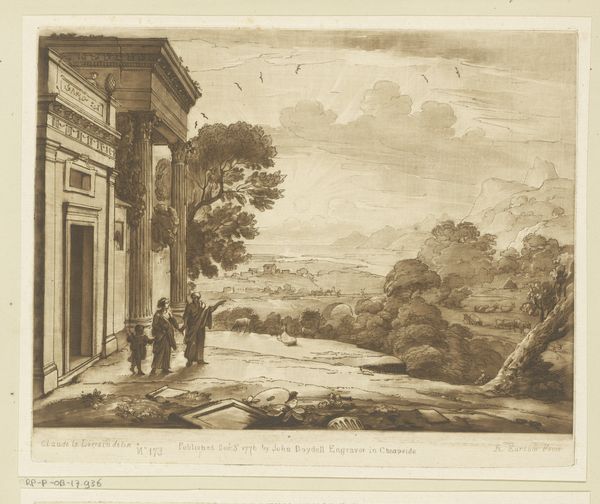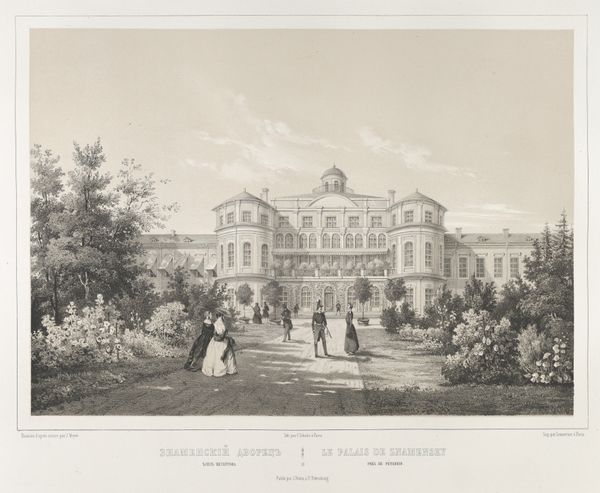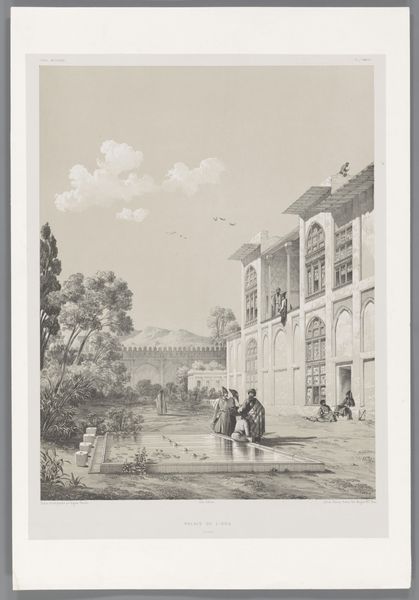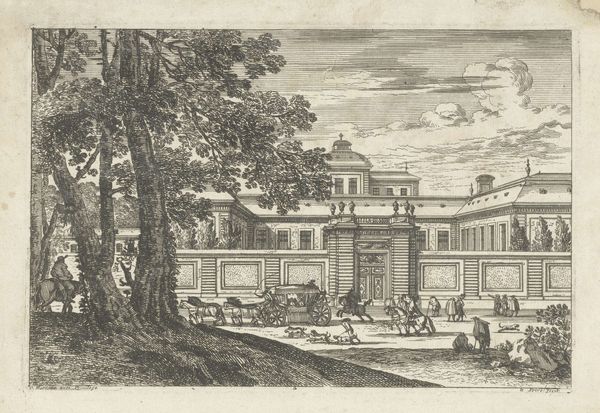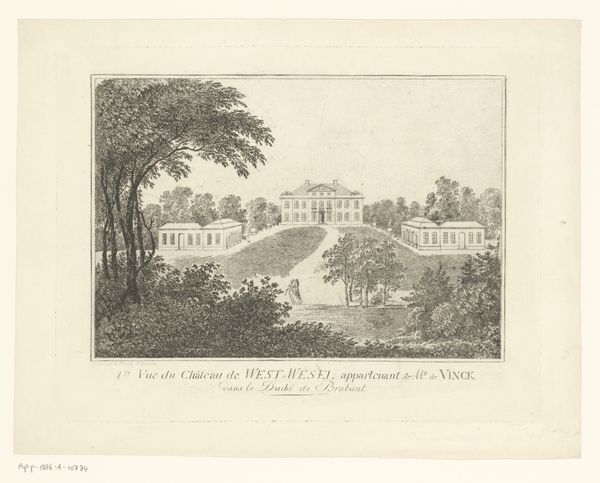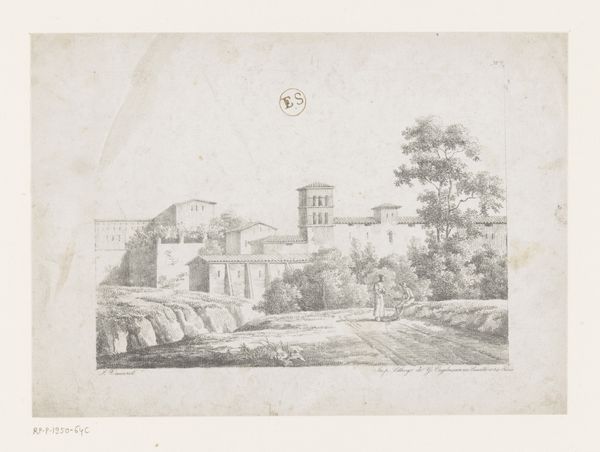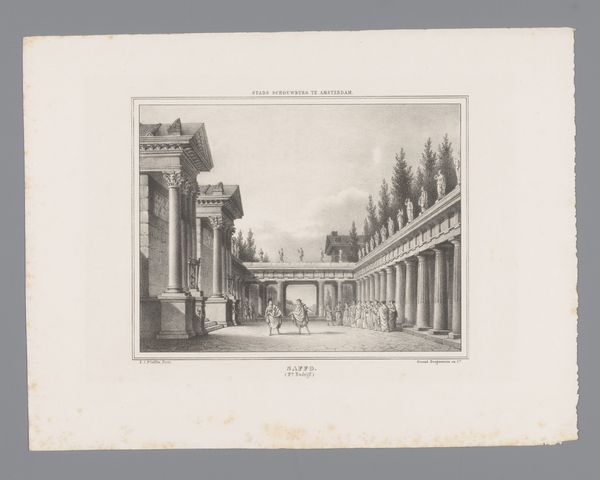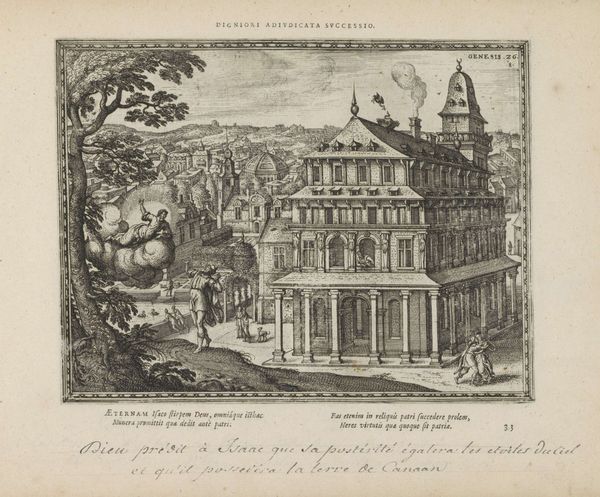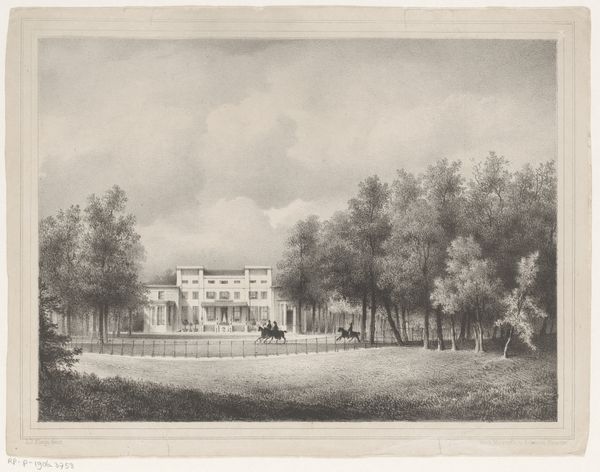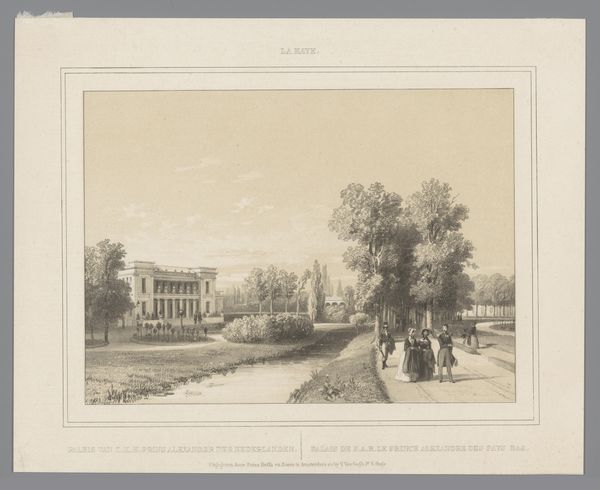
Palais de S.A.I.Mgr. Le Duc de Leuchtenberg, from the series Vues pittoresques des palais & jardins impériaux aux environs de St. Petersbourg 1845 - 1855
0:00
0:00
drawing, print, etching, architecture
#
tree
#
drawing
#
animal
# print
#
etching
#
landscape
#
flower
#
romanticism
#
men
#
cityscape
#
history-painting
#
architecture
Dimensions: Image: 9 3/4 x 13 3/4 in. (24.8 x 35 cm) Sheet: 15 3/4 x 22 1/2 in. (40 x 57.1 cm)
Copyright: Public Domain
Editor: So, here we have J. Meyer's print, "Palais de S.A.I.Mgr. Le Duc de Leuchtenberg," created sometime between 1845 and 1855. It depicts this grand palace, using etching and drawing techniques, giving it a somewhat muted, almost dreamlike quality. What jumps out to you when you look at this? Curator: The image speaks of imperial ambition tempered by Romantic sensibilities. The Leuchtenberg palace, bathed in soft light, is presented not just as architecture but as a symbol of power and lineage intertwined with nature. Note the figures in the foreground—are they mere staff, or do they embody a specific narrative, a royal procession perhaps? Editor: They're so small compared to the building; it almost feels like they’re included just to give a sense of scale. Do you think the flowers and overgrown vines suggest any type of meaning? Curator: Precisely. The seemingly uncontrolled flora encroaching upon the meticulously designed architecture suggests a negotiation between nature's untamed force and humanity’s desire to impose order. The Romantic era grappled intensely with the sublime – an awe-inspiring sense of nature's power, simultaneously beautiful and terrifying. How does this contrast impact your emotional response to the print? Editor: I see what you mean. It’s less a celebration of dominance and more about finding harmony, or at least, an acceptance of nature's presence. I hadn't considered that before. Curator: It reveals the persistent power of imagery to contain memory, aspiration, and even subconscious cultural anxieties. Editor: This makes me view 19th-century landscapes so differently. Thanks, it's more complex than I ever realized!
Comments
No comments
Be the first to comment and join the conversation on the ultimate creative platform.
